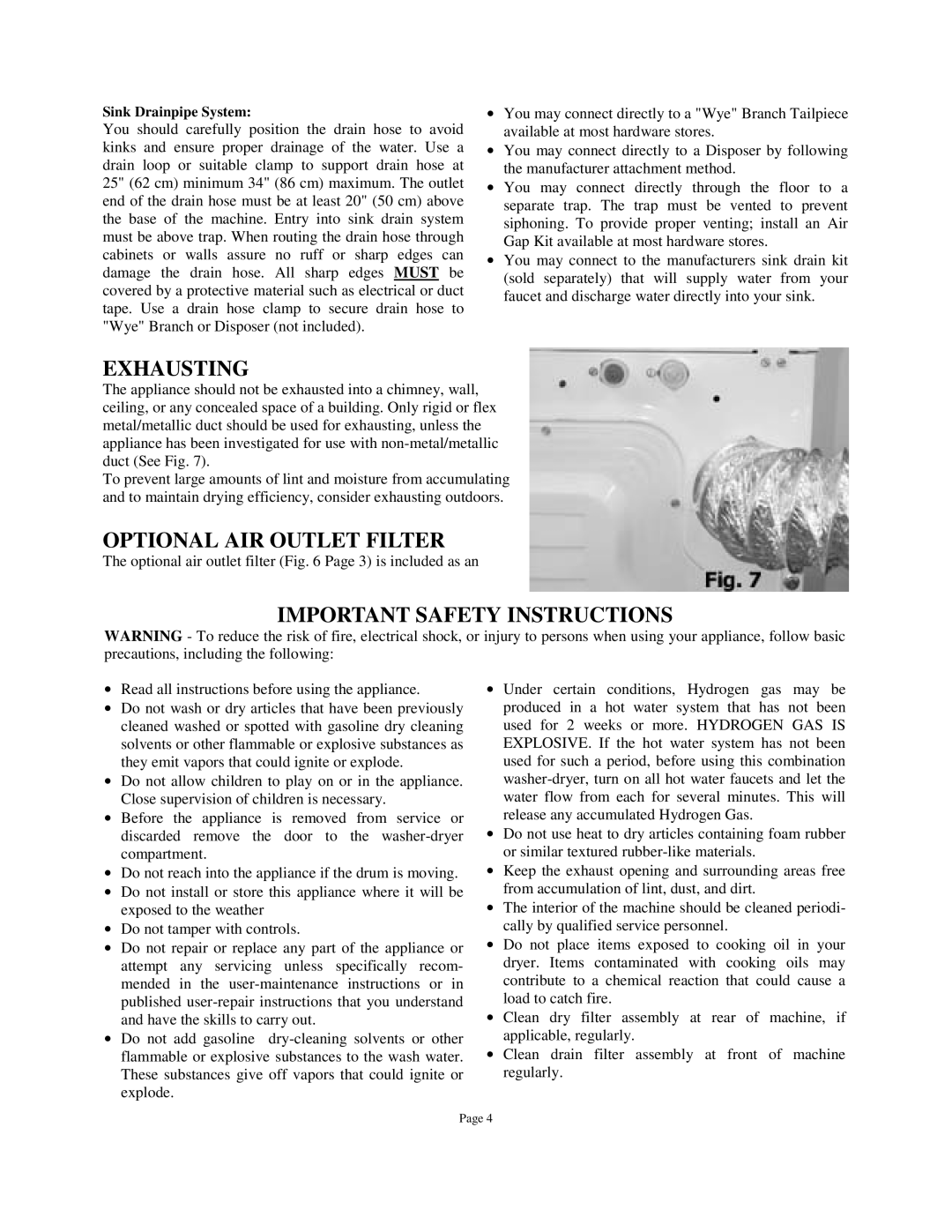WD802M specifications
The Splendide WD802M is a compact washer-dryer combo that caters specifically to those with limited space but high laundry demands. Designed for RVs, boats, and small apartments, the WD802M combines efficiency and convenience, making it a popular choice for individuals and families looking for an all-in-one solution.One of the standout features of the WD802M is its impressive washing capacity of 15 pounds and drying capacity of 11 pounds. This capacity allows users to handle a substantial amount of laundry without frequent loads, striking a perfect balance between functionality and limited space. The machine is equipped with a variety of wash programs, including delicate and heavy-duty settings, which can accommodate different fabric types and soil levels.
The WD802M boasts an advanced control panel that simplifies operation. The intuitive digital display allows for easy selection of wash cycles, temperatures, and spin speeds. Users can choose from 8 wash cycles, including options for quick wash and eco-friendly washing. This level of customization ensures that garments are cared for properly while maximizing cleaning efficiency.
Another notable characteristic of the Splendide WD802M is its energy efficiency. The unit is designed to be environmentally friendly, using less water and electricity compared to traditional washers and dryers. This not only helps reduce utility costs but also minimizes the environmental footprint of laundry routines.
The machine operates at a quieter level due to its advanced vibration reduction technology, making it an ideal choice for apartments or spaces where noise can be an issue. This technology allows for a peaceful laundry experience without disturbing everyday activities.
Moreover, the WD802M features a stainless steel inner drum that is durable and resistant to chipping and peeling. This quality construction extends the life of the unit, ensuring reliability over the years. The built-in lint filter is also easy to access and clean, helping to maintain optimal dryer performance.
Overall, the Splendide WD802M is a highly efficient, compact washer-dryer combo that combines convenience, functionality, and ease of use. With its variety of features tailored for modern living, it is a solid choice for anyone seeking a versatile laundry solution.

